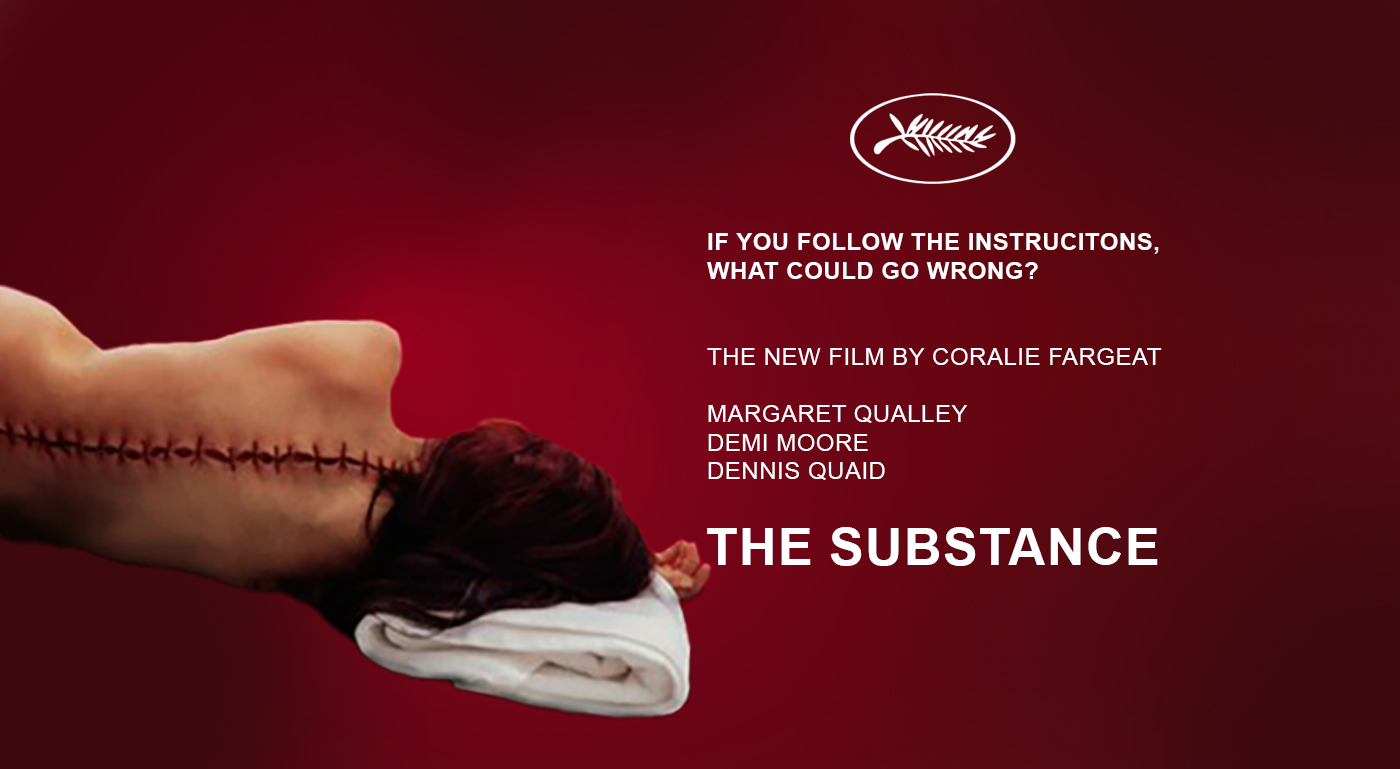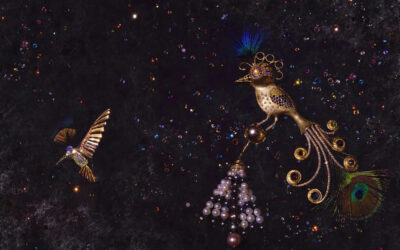A big success appears to be “The Substance” by Coralie Fargeat. Imagine taking bits and pieces from beloved movies and layering them—a vision from “2001: A Space Odyssey” with the stark bathroom setting of transmutation and abandonment, evoking a search for eternal life; or emulations of “Carrie,” with the long, graphic scenes of blood and splattered portraits. There are unmistakable nods to Lynch, Cronenberg, De Palma and Luc Besson, creating a film of references. It is undoubtedly a sincere way, crafted like a dripping layered cake bearing too much cream and syrup, with too much corrugation. Somehow, Fargeat manages to overwhelm her own camera. In art, knowing when to stop is crucial, but the perfect balance of gore and exaggeration is a mastery she seems unconcerned with here. With the benefit of three extraordinary actors who deliver brilliant performances, she allows herself to indulge in the banal and the ridiculous.

Dennis Quaid, Coralie Fargeat and Demi Moore
The portrayal of the disgusting male figure by Dennis Quaid is simply hilarious and perfect. His “ Grand Bouffe” style and revolting attitude towards women are memorable—“This is a working TV, not a fucking charity,” Harvey tells his aging ex-star with fury and revulsion. The contrast Fargeat builds between the male and female images is harsh and powerful. If old men of success are seen as geniuses, for women, renewal is inevitable. The banality in the masculine horde shouting : ‘pretty girls should always smile,’ is off-putting.
The search for eternal youth, reminiscent of “Death Becomes Her,” explores the encounter with oneself and the deep-seated hatred defining the non-dialogue between Demi Moore and Margaret Qualley, the 50-year-old Elisabeth Sparkle and her younger “more perfect” version, Sue. This theme is highly relevant today. The de-doubling and drug-like effect are illustrated with a rather mediocre visual effect, abusing a superficial burning heart symbol. Technically, the film tries to capture the viewer’s attention with many macro shots focusing on the most “surgical” and anatomical phases of the frames.


Organic mush, bodies being torn apart, gushing blood, holes in flesh, and other gruesome elements do not serve a profound thought, cool body horror, or a drama, but rather a boisterous and ironic film. The French director brings to the Croisette a body horror comedy, a loud farce that looks back to the ’80s/’90s—raising the question whether certain standards ever change—and fittingly resurrects one of the main stars of that era, Demi Moore.
Dr. Marco Tassini
The lengths women go to maintain youth and fame, creating monsters of their own bodies, is a much needed theme. The Faustian contract Elisabeth Sparkle signs, rapidly evolves into a gory-comic escalation and a revulsion-inducing experience. The skilful use of light on Demi Moore’s back ads a Hopperian solitude, an inner view of self un-appreciation.
“Sparkle your life with Elisabeth” has to become “Pump up your life with Sue.”

It is a shoutout from the French director towards women, a dark and desperate cry towards a society that nourishes this anguish and deferred reality. Margaret Qualley, with her dream body and face, provides an egocentric and insouciant character imbued with violence, disconnected from her own, the matrix, and devoid of experience and wisdom. The illusion of cannibalism and self-devouring sends a powerful message that makes your head spin. Over all of this, Fargeat uses a blaring soundtrack, with its crescendos, bold graphics, and evident product placements, like pastiche TV advertisements you could crop right out of the movie and use for Coca-Cola, Tilbury Makeup, and even Roger Vivier…
The use of apparent elements, like the “extermination” panel, makes the plot obvious as self-hate, paranoia, and solitude unfold on the screen. The desperate monster in its horrible appearance triggers sadness and indignation unleashing the crowd. The woman becomes a hideous thing, surpassing the pitiful object she turned into in her quest of eternal youth and success.
In this “Dr. Jekyll and Mr. Hyde” set in the era of Botox and plastic surgery, the question posed is: how much are we willing to hurt ourselves to please the gaze of others? To conclude Coralie Fargeat makes use of the Méduse, this ancient popular figure frequently depicted as a monster, symbol of protection for abused women, symbol of freedom, and challenge to gender norms and the power traditionally held by men… beware her force, she might petrify you.
by Alexandra I.Mas
photos © Marco Tassini





